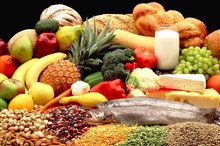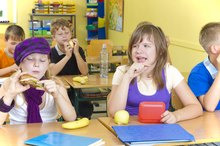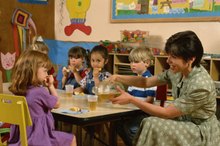What does fact checked mean?
At Healthfully, we strive to deliver objective content that is accurate and up-to-date. Our team periodically reviews articles in order to ensure content quality. The sources cited below consist of evidence from peer-reviewed journals, prominent medical organizations, academic associations, and government data.
The information contained on this site is for informational purposes only, and should not be used as a substitute for the advice of a professional health care provider. Please check with the appropriate physician regarding health questions and concerns. Although we strive to deliver accurate and up-to-date information, no guarantee to that effect is made.
Nutrition for Middle School Students
Middle school students are often in control of what they put in their mouths, but many times they do not make or do not know how to make healthy choices. It is crucial to instill nutritional concepts in middle school children, who are typically ages of 12 to 14, because the way they eat now is likely to be the way they eat as adults. A few clever and engaging activities may help to motive them to take charge of their health by making nutritious eating choices.
Middle School Students and Healthy Eating
Children in middle school, which is usually 7th and 8th grade, are still growing rapidly, which makes healthy eating a vital part of their lives 1. Middle school students need the vitamins, minerals and anti-oxidants found in a variety of foods, which makes nutrition an important part of their education.
Foods for Healthy Middle-School Students
5 Main Types of Healthy Food
Learn More
As middle-school students gain more independence, they are more likely to begin making their own meal choices, which often include:
- unhealthy foods like cheeseburgers
- pepperoni pizza
- french fries
- soda
ChooseMyPlate.gov reports that children in middle school need 5 to 8 ounces of grains, such as cereal, bread and pasta. They also need 5 to 6.5 ounces of protein foods, such as lean meat, fish, beans and nuts. Children this age also need at least 3 cups of low-fat milk each day.
Foods Middle School Students Should Avoid
As middle-schoolers continue to approach adulthood, they need to learn healthy eating habits, because the way they eat now is likely how they will eat as grownups 1. It is crucial to teach middle-schoolers, who often choose sugary, fatty and other unhealthy foods, how to restrict junk and choose more nutritious foods. Educate them about how these foods can lead to weight gain, sluggishness and a decreased ability to concentrate.
Suggested Activities
How Does Food in Class Affect Children in School?
Learn More
Even though they are more advanced academically, middle school students still respond to hands-on learning activities that are typically used with younger students, such as art projects and games. Encourage middle-schoolers to create a board game that allows them to move forward by choosing healthy food and makes them move backward when they've chosen junk food. Allow for creativity to build interest in the topic. Play healthy food picture-puzzles games by having one team draw a food and having the other team guess what it is and then identify whether it is healthy or unhealthy. Take the students to the computer lab and allow them to access Bam!, a website geared toward this age group. It covers all aspects of good health, including food and nutrition by having the students play games and do other online activities.
- Even though they are more advanced academically, middle school students still respond to hands-on learning activities that are typically used with younger students, such as art projects and games.
- Encourage middle-schoolers to create a board game that allows them to move forward by choosing healthy food and makes them move backward when they've chosen junk food.
Related Articles
References
Writer Bio
Sara Ipatenco has taught writing, health and nutrition. She started writing in 2007 and has been published in Teaching Tolerance magazine. Ipatenco holds a bachelor's degree and a master's degree in education, both from the University of Denver.









